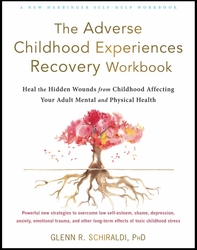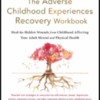Glenn R. Schiraldi, Ph.D. Psychology Today blog post, January 2, 2023
This post is part of a series on adverse childhood experiences. Read the other parts here.
One of the key tasks in life is to learn how to enjoy it—despite the roadblocks and hidden wounds from childhood. But childhood trauma and emotional upheavals can deleteriously shape the way the brain develops. Survivors of adverse childhood experiences often and understandably feel, to one degree or another, shut down and emotionally numb, unable to fully experience positive emotions. Perhaps you’ve found it difficult to fully engage in experiences that others seem to enjoy. Maybe you‘ve been focused for so long on fear and survival that you don’t notice life’s wholesome pleasures. Or maybe difficult times have turned you cynical or jaded.
Through epigenetic influences, even your ancestors’ stress and strains can shape your brain wiring. For example, in a large study, parental depression was linked to smaller volume in the pleasure center of children’s brains.
The good news is that the brain is plastic. The brain that is stuck in negative coping patterns can be rewired to form new, more positive neural pathways. Having learned and applied the healing principles and skills discussed in previous articles, you might now wish to try new skills to increase joy and happiness (we’ll use the words joy and happiness interchangeably in this article).
Ideally, parents/caregivers imprint joy in the developing brain by valuing and enjoying the child—smiling, laughing, and playing with the child—and by modeling ways to find joy from day to day. If you lacked such experiences, it is especially important to rewire your brain for joy. Through the strategies that follow, you’ll engrain joy circuits, sometimes by reinforcing old pleasant memories and sometimes by creating new joyful experiences.
How to Increase Joy
1. Determine to open your heart to life’s loveliness. Standing in formation on a bitterly cold day in a brutal WWII concentration camp, Viktor Frankl was awestruck as he gazed through the barbed wire at the most beautiful sunset imaginable. Like Frankl we can choose the attitude that we’ll find something to enjoy, no matter how bitter our circumstances. For example, we’ve long known that exercise lifts the mood. However, a special kind of exercise called awe walking has also been found to lift the mood. Instead of counting steps or heartbeats, one simply notices what stirs a feeling of awe—such as a beautiful sunrise or other magnificent sights in nature; an innocent child, or man’s marvelous creations, such as an attractive home, roads, or an automobile. Allow yourself time to bask in the treasures around you.
2. Remember the good times. And remind yourself that many can still be enjoyed. Several strategies have been studied:
- Pick a word or phrase that calls up a pleasant memory, such as peace, contentment, calm, love, delight, happy, amusement, wonder, curiosity, flow, accomplishment, or wholesome pride. Recall the pleasant memory in detail for a minute. Then track your body and emotions. Take time to notice subtle shifts. Repeat this two or three more times, using different words or phrases each time (Askelund et al. 2019).
- Recall your happiest moments. Imagine that you are sitting in a movie theater looking at a white screen. Snippets of your happiest memories flash on the screen. Now imagine that one of your happiest moments is showing on the screen in vivid detail. Imagine that you enter the scene and fully experience it with all five senses (for example, what did you see all around you, what did you hear, what did you feel against your skin?). Then pay attention to what emotions you felt and where in your body you experienced those emotions. The more vivid and detailed the recall, the better. Do this for five or ten minutes on each of several days, recalling either the same memory or different ones.
- Make a happiness album of favorite memories and things. You might include photos, journal entries, poems, recipes, inspiring thoughts, jokes, or funny reminders of what made you laugh.
- Savor with gratitude. For five minutes at day’s end, list five things from the day that you are thankful for. Write slowly and savor each experience (why you enjoyed it, what it meant to you, how it made you feel).
- Recall favorite action memories, such as playing childhood games, climbing a favorite tree, or running into the wind. Imagine them in detail—images, sensations, emotions, and thoughts (Ogden and Fisher, 2015).
- Recall your accomplishments. You’ve shown resilience to make it this far in life; you have all the strengths, in embryo, needed to thrive. Make a list of your accomplishments in early life, such as going to school, separating from parents, and learning to get along with different people. Then list accomplishments from later on, such as graduating or learning a trade. Next to each accomplishment write down the strength(s) that it took to achieve it.
3. Plan pleasant events. There are hundreds of events that give people pleasure, ranging from talking with friends or family to walking through the woods, reading a good book, going on a bike ride, eating a good meal, taking a nap, or washing and waxing a car. Start by making a list of events that have given you pleasure in the past. To get the ball rolling, try completing this sentence stem, writing freely, without thinking too much about what bubbles up: “What amused me when I was young was….” After listing all the events you can think of, put a check mark by each event that you think could still be fun. Next, make a plan to do one of those events each week. Before doing an event, set yourself up to enjoy it, say, by thinking, “Today as I bike I’ll enjoy the warm sunshine on my skin.” Or, “I will enjoy laughs with my friend at lunch.” Then release and relax into the event, without worrying about checking emails, the time, and so forth. (Lewinsohn et al. 1986).
4. Practice smiling. Numerous studies indicate that smiling lifts the mood, even when smiling is somewhat contrived. Throughout the day, notice what is amusing, comical, ludicrous, beautiful, uplifting, or inspiring. And when you do, practice the habit of smiling with a little twinkle in your eye.
Conclusion
These joy strategies can lift your mood, Mindfully repeating them strengthens newly imprinted neural pathways associated with pleasant emotions, in effect rewiring your brain for joy. The more you practice these “joy skills," the more you build joy inertia, increasing the likelihood that you’ll find more and more things to be joyful about. Be relentless as you practice your joy skills. In your practice, be patient and compassionate as you gradually replace old engrained neural pathways with new ones.
The next post will address moving past ACEs and creating a bright new future.
References
- Schiraldi, G. R. (2021). The Adverse Childhood Experiences Recovery Workbook. Oakland, CA: New Harbinger Publications.
- Askelund, A. D., S. Schweizer, I. M. Goodyer, and A. L. van Harmelen. (2019). Positive Memory Specificity Is Associated with Reduced Vulnerability to Depression. Nature Human Behaviour 3: 265–273.
- Lewinsohn, P. M., R. F. Munoz, M. A. Youngren, and A. M. Zeiss. (1986). Control Your Depression. New York: Prentice Hall
- Ogden, P., and J. Fisher. (2015). Sensorimotor Psychotherapy: Interventions for Trauma and Attachment. New York: W. W. Norton.
About the Author
Glenn R. Schiraldi, PhD, has served on the stress management faculties at The Pentagon, the International Critical Incident Stress Foundation, and the University of Maryland, where he received the Outstanding Teacher Award in addition to other teaching/service awards. His fourteen books on stress-related topics have been translated into seventeen languages, and include The Adverse Childhood Experiences Recovery Workbook, The Self-Esteem Workbook. The Resilience Workbook, and The Post-Traumatic Stress Disorder Sourcebook. The founder of Resilience Training International (www.ResilienceFirst.com), he has trained laypersons, emergency responders, and clinicians around the world on the diverse aspects of stress, trauma, and resilience.
Title image photo credit: monkeybusinessimages/istockphoto



Comments (0)